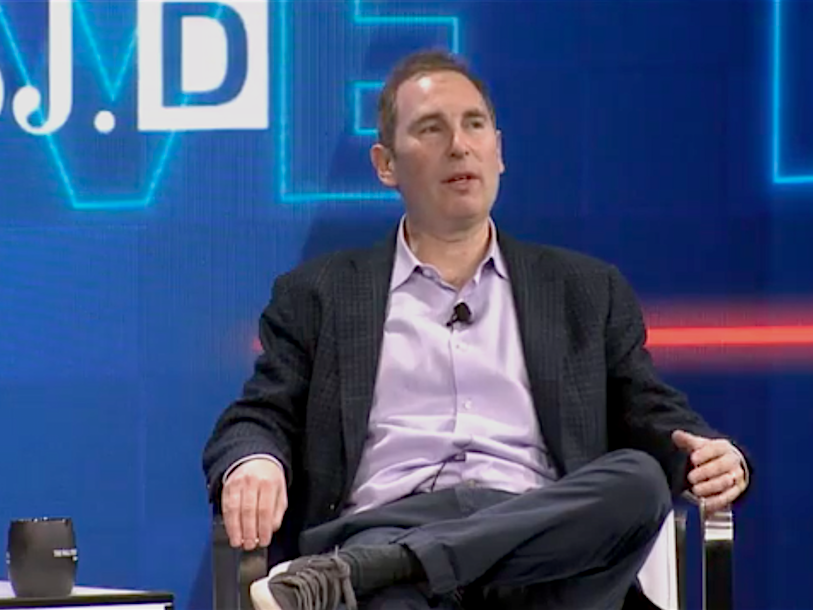Lots of Amazon's projects have failed...and that's ok, says Amazon's Andy Jassy

(AWS CEO Andy JassyWSJ D.Live/screen capture)
Amazon Web Services CEO Andy Jassy is running the company's most profitable runaway success story, the cloud business.
AWS is on track to do $10 billion in revenue this year and along the way AWS has upended the entire computer industry, with giants like Microsoft and Google now chasing Amazon.
While it's easy to point to all that success, no one ever seems to forget the company's big fat failures either. On Tuesday, speaking at the Wall Street Journal's WSJ D Live conference in Laguna Beach, California, Jassy was asked about Amazon's short-lived Fire phone.
He responded by listing all the other projects that Amazon tried and biffed over the years since he joined the company, back in May, 1997. That was right before its IPO, when Amazon was still just an online bookseller, he said.
For instance, one of the first failures he remembers happened back in the early 2000's when Jassy was internally known as the "shadow" to Amazon founder CEO Jeff Bezos. His role back then was chief of staff and Bezos' right-hand man.
"One of first things we did was trying to aggregate all of these menus from all over the country," he said. The idea was to help people order take-out food. It didn't work. "At the end of day, we didn’t have enough menus, we didn’t have enough of a call to action," he recounted.
Internal honesty
More recently, there was a failed database project at AWS called SimpleDB. "We spent many months defining this product and as it turned we just got the abstraction, the functionality and the scalability wrong," he said.
However, writing a database that didn't work helped the company learn how to write one that did, called DynamoDB, which AWS customers have been using, he says. "So of course, we built a brand new non-relational database, Dynamo DB, which has been a very successful service for us. But we would not have gotten there if we didn’t learn the lessons early on," he said.
It all comes down to being honest, he said. "Tell the truth. Tell the truth to yourself. Don’t convince yourself that it's really working when it's not working," he said and added that he thinks this internal honesty is "probably Amazon’s biggest strength ... a great learning company."
As we previously reported, Amazon also has an unusual technique for helping it choose which ideas to pursue: it writes a fake aspirational press release. It then engages in a process known as "have backbone" where everyone from leaders to the junior employees on the team are obliged to speak up and voice their concerns. Once the team commits to a course of action, everyone is expected to be fully on board.
A spokesperson explained the policy to Business Insider like this:
Have Backbone; Disagree and Commit
Leaders are obligated to respectfully challenge decisions when they disagree, even when doing so is uncomfortable or exhausting. Leaders have conviction and are tenacious. They do not compromise for the sake of social cohesion. Once a decision is determined, they commit wholly.
NOW WATCH: Yellowstone is using 'thirsty' concrete that absorbs 50 gallons of water a minute
More From Business Insider

 Yahoo Finance
Yahoo Finance 
